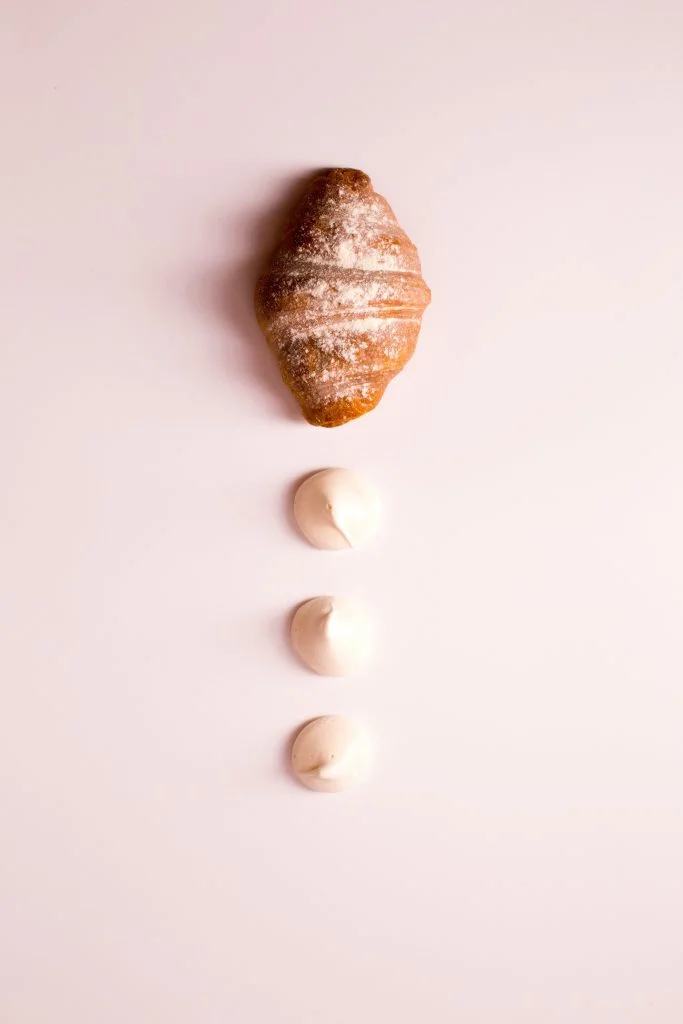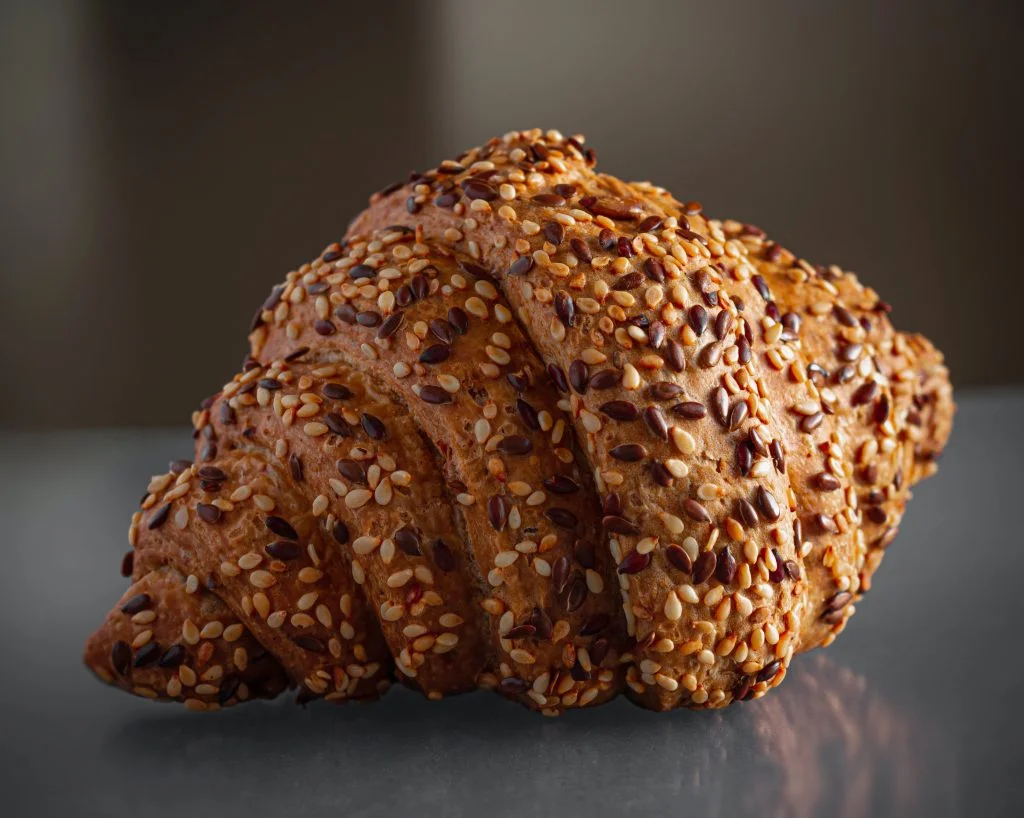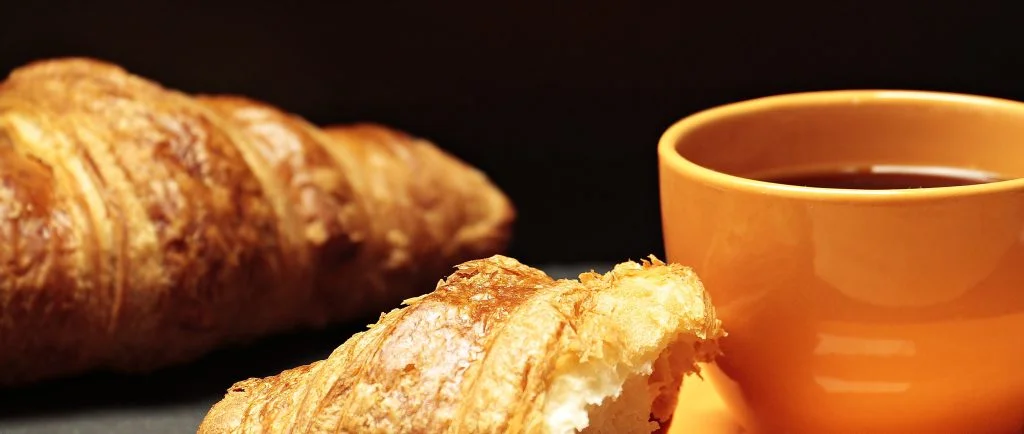Ah, croissants – the flaky, buttery love of my life. I remember my first croissant like it was yesterday. There I was, in a tiny Parisian bakery, slightly lost and severely hungry. I asked for ‘one of those curvy bread things,‘ and the rest is history.
Now, after devouring, I mean,’researching‘ croissants in over 20 countries (I take my carbs seriously), I’m practically a walking croissant encyclopedia. Did you know croissants weren’t even invented in France? Shocking, right? Stick with me, and I’ll share 50 mind-buttering croissant facts that’ll make you the star of your next brunch. Ready to roll into this buttery adventure?
The croissant is not just a pastry, it’s a symbol of culinary elegance and tradition.
Alain Ducasse
Croissant Facts
Let’s dive into the delicious world of croissants. Make sure to read through, as there’s a quiz at the end to challenge your croissant wisdom.
- The croissant originated in Austria, not France.
- Its shape is often associated with the crescent of the Turkish flag.
- Croissants were created to celebrate the defeat of the Ottoman Empire in Europe.
- Marie-Antoinette of Austria introduced the pastry to France.
- The French version is made with puff pastry, which is different from the Austrian version.
- Classic croissants are made with butter, flour, yeast, milk, and sugar.
- Layering the dough with butter creates its flaky texture.
- Laminating is the process of folding butter into the dough multiple times.
- Croissants are a symbol of French patisserie.
- World Croissant Day is celebrated on January 30th.
- Chocolate croissants are known as ‘pain au chocolat’ in France.
- Almond croissants are filled with frangipane and topped with sliced almonds.
- Ham and cheese croissants are a popular savory variation.

- Croissant dough is sometimes used for other pastries, like ‘croissants aux amandes’.
- The perfect croissant is golden, with a crisp outer layer and soft, airy inside.
- Baking time and temperature are crucial for the perfect texture.
- Vienna is considered the birthplace of the croissant.
- Croissants made outside of France often use margarine instead of butter.
- Homemade croissants require patience and skill due to their complex process.
- The name ‘croissant’ literally means crescent in French.
- Croissants were once considered a luxury item in France.
- The flakiness is achieved through a process called ‘le feuilletage’.
- Croissants are often enjoyed at breakfast in France.
- Butter content can vary, affecting flavor and texture.
- Croissants should have a honeycomb-like structure inside when cut open.
- Variations include fillings like chocolate, almonds, or ham and cheese.
- Frozen croissants are popular for home baking.
- They are often paired with coffee or hot chocolate.

- Croissants can be made into sandwiches with various fillings.
- Proofing the dough is essential for the rise and texture.
- Over-proofing can cause the croissants to lose their shape.
- Under-proofing leads to dense and heavy croissants.
- Croissants are a common part of a French continental breakfast.
- Crispness on the outside is a key characteristic.
- Mini croissants are popular for buffets and parties.
- Croissant dough is often rested overnight for best results.
- Bakers spend years mastering the art of croissant making.
- The rolling technique affects the final layering of the pastry.
- French law regulates what can be sold as a croissant.

- They can be served plain, with jam, or even dipped in chocolate.
- Croissant dough is similar to puff pastry but with yeast.
- Authentic French croissants are never made with fillings baked inside.
- Butter croissants are considered the most traditional form.
- The lamination process creates over 50 layers in the dough.
- Paris is known for having some of the best croissants in the world.
- Croissant-making machines help in mass production, but artisans prefer hand-making.
- Vegetarian and vegan croissant options are becoming more popular.
- Croissants have become a global breakfast staple.
- They are a common item in French-themed cafés and bakeries worldwide.
- The quality of ingredients is key to the flavor and texture of a croissant.
Croissant Myths

With the rich facts about croissants freshly baked in our minds, let’s go through the myths about them to find the dough of truth.
- Croissants Originated in France
Croissants actually have their roots in Austria. The early 19th century saw the creation of “kipferls” as a Viennese specialty. In France, the croissant evolved into its current form, becoming a symbol of French cuisine. - Croissants are Always Made with Butter
While the classic French croissant is indeed buttery, there are variations. In regions where butter is less common or more expensive, some croissants are made with margarine or other fats. The key is in the technique of layering the dough, known as “laminating.” - Croissants are a Healthy Breakfast Option
Croissants are delicious, but not particularly healthy. They’re high in butter (hence, high in fat) and lack significant nutritional benefits like fiber or protein. They’re more of a treat than a nutritious start to the day. - Croissants Must Always be Crescent-Shaped
The crescent shape is traditional but not mandatory. You can find croissants in various shapes, especially when they are filled or flavored. Some bakers get creative, offering straight, square, or even knot-shaped croissants. - Making Croissants at Home is Extremely Difficult
While making croissants requires patience and a bit of skill, it’s not impossible to do at home. The key is in managing the dough’s temperature and mastering the technique of rolling and folding. With practice, anyone can make delicious homemade croissants!
No products found.
Croissant Quotes

Croissants, with their flaky texture and rich flavor, have inspired many delightful quotes. Here are five famous quotes about croissants:
With enough butter, anything is good. Especially when it comes to croissants.
Julia Child
This quote reflects Julia Child’s famous love for butter and how it enhances the taste of food, particularly in the context of the rich, buttery layers of a croissant.
A well-made croissant can be the pinnacle of baking, a perfect marriage of crust and softness.
M.F.K. Fisher
M.F.K. Fisher, a renowned food writer, emphasizes the artistry and balance required in creating the perfect croissant, combining a crispy crust with a soft interior.
Paris is a moveable feast, and a croissant is its most delightful appetizer.
Ernest Hemingway
Ernest Hemingway’s quote draws a metaphor between the vibrancy of Paris and its cuisine, with croissants being an iconic and delightful part of the Parisian culinary experience.
A perfect croissant, it’s a blend of art and science. It’s about precision, temperature, timing, and a passion for the pastry.
Gordon Ramsay
Renowned chef Gordon Ramsay highlights the technical precision and passion required in baking, particularly in achieving the artful perfection of a croissant.
Paris is always a good idea, and its croissants are a reminder of why.
Audrey Hepburn
Audrey Hepburn, a celebrated actress and fashion icon, links the allure of Paris to its famous croissants, symbolizing the city’s charm and elegance.
Croissant FAQ

You’ve just enjoyed a selection of delightful croissant quotes. Next up is the FAQ section, rich with information. Keep in mind, the quiz will follow, so read carefully.
- Is a Croissant French?
Absolutely! The croissant is indeed a French pastry, known worldwide for its flaky, buttery layers. However, its origins are a bit of a twist: it’s believed to have been inspired by the Austrian ‘kipferl’, a crescent-shaped pastry, and was later adapted by French bakers. - How Do You Pronounce ‘Croissant’?
In French, you pronounce it more like “kwah-son” with a soft and nasal ‘n’ at the end, gently rolling the ‘r’, and silencing the ‘t’. However, in English-speaking countries, you’ll often hear it pronounced as “kruh-sahnt”. - Are Croissants Gluten-Free?
Typically, traditional croissants use wheat flour, which contains gluten. However, some bakeries might offer gluten-free versions using alternative flours, but these are less common. - What Makes a Croissant Different From Other Pastries?
The distinctiveness of a croissant lies in its preparation. The technique called ‘laminating‘ involves repeatedly folding and rolling dough with layers of butter. This creates the iconic flaky, airy layers that croissants are famous for. - Can You Make Croissants at Home?
Yes, you can! Making croissants at home is a bit of a culinary adventure due to the detailed process of layering and resting the dough. It requires patience and precision, but the result can be incredibly rewarding and delicious!
No products found.
Croissant Trivia

The time has come for the Ultimate Croissant Quiz! Remember, if you don’t get any answers right, you might just turn into a baguette overnight. Stay sharp!
Conclusion
In the world of pastries, the croissant is the undeniable king. And we mean that in the best way possible! Who knew that a simple combination of flour, butter, yeast, and a touch of magic could create something so heavenly? Each layer of a croissant tells a story of artistry and patience. It’s a pastry that demands respect (and perhaps a napkin or two).
But let’s face it, no matter how many croissant facts you eat, the real question remains: Is it acceptable to eat croissants for every meal? And if you’re feeling adventurous, why not pair your next croissant with something unconventional? What’s the craziest combination you’ve tried? Let me know your crazy ideas in the comments.


